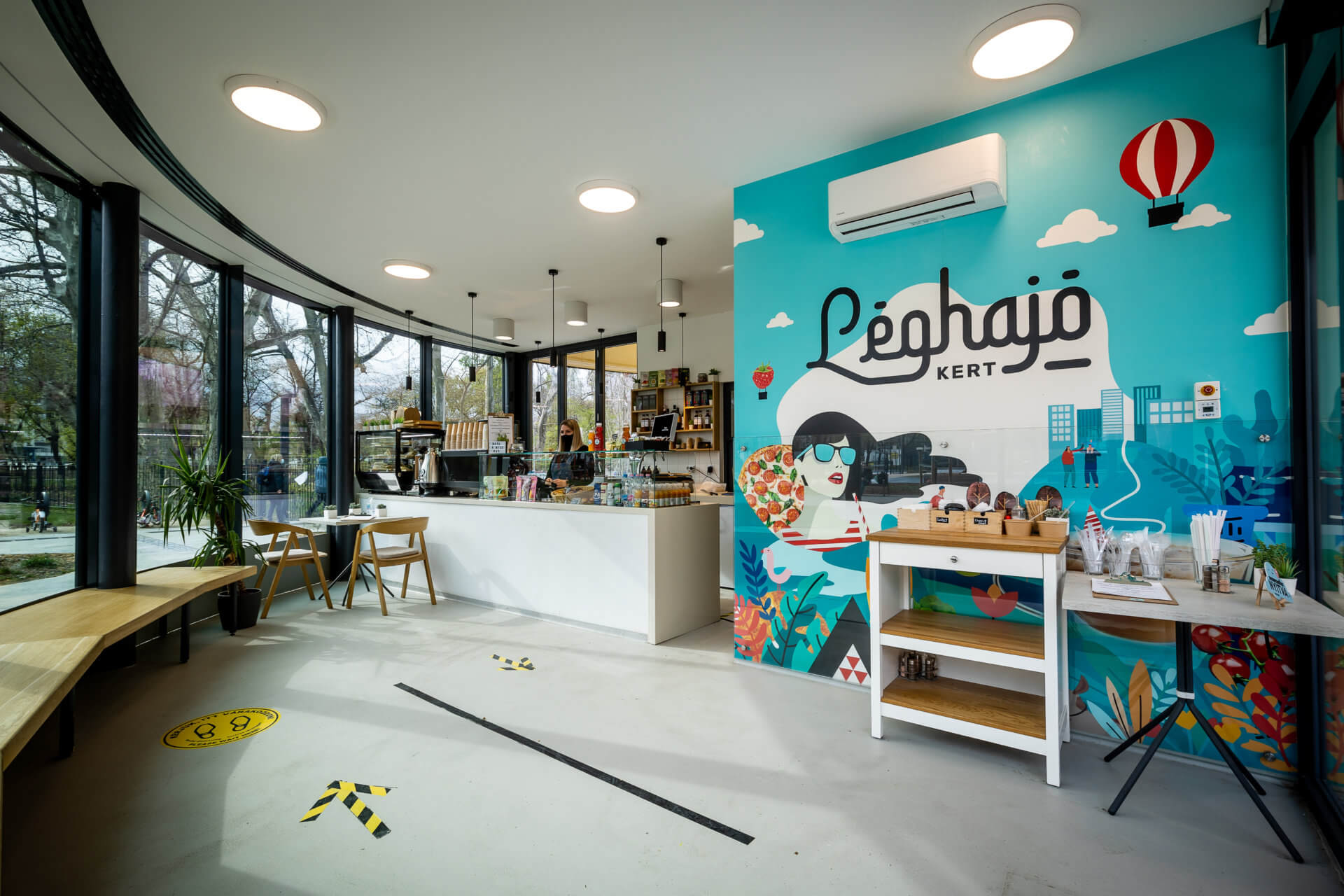
BalloonFly
See the City Park from a bird’s eye view, and marvel at Budapest’s panorama from a height of 150 metres
You have very probably seen the BalloonFly floating over the city, since the red-and-white striped balloon can be seen from numerous vantage points. Anyone who spots it might feel as if they had already seen this cheerful looking orb somewhere before. You could have seen it in the middle of the City Park’s Main Playground in the form of a giant climbing frame, packed with children. Or above the entrance of the Balloon Garden Café next to the playground, because the striped balloon is also the symbol of this venue. And of course you could have seen the original in Pál Szinyei Merse’s painting in the Hungarian National Gallery, or indeed in a photo, postcard or in any reproduction of the painting. With its shape and colours, the BalloonFly in the City Park, which brings to mind Pál Szinyei Merse’s iconic piece, quickly became very popular among tourists and locals alike, and is now one of the latest, cheerful symbols of Budapest.
Aerial vantage point

The BalloonFly functions as an aerial vantage point fixed to the ground on Mimosa Hill, next to Széchenyi Baths, from where it can rise to an altitude of 150 metres carrying up to 30 passengers in one go. From close up, you may notice that this is not a hot air balloon as its basket is lifted into the air by a sphere filled with helium gas, anchored to the ground by a thick steel wire. The system also has a wind speed and direction meter, an ambient temperature meter, a dome pressure indicator and a charge gas temperature meter to make sure the balloon ascends in good weather conditions. Many popular entertainment parks abroad (e.g. Disneyland, Paris; Safari Park, San Diego; Angkor Wat) use the same balloon lookout system. Operating it poses no threat to the environment, since it is filled with helium: a natural, inert gas that does not react with other elements, is non-toxic, non-flammable, and completely safe.
Weather forecast
Dear Visitors, please note that the operation of the balloon depends on the weather. According to the recent forecast you will be able to take off at the following times:
Morning
08:00
08:20
08:40
09:00
09:20
09:40
10:00
10:20
10:40
11:00
11:20
11:40
Afternoon
12:00
12:20
12:40
13:00
13:20
13:40
14:00
14:20
14:40
15:00
15:20
15:40
16:00
16:20
16:40
17:00
17:20
17:40
18:00
18:20
18:40
Evening
19:00
19:20
19:40
20:00
20:20
20:40
21:00
21:20
21:40
22:00
22:20
22:40
23:00
23:20
23:40
Ideal weather conditions
Uncertain weather conditions
Downtime
Private flight. Book a private flight!
Changing weather
At an altitude of 150 metres, the weather can be very different from that what you feel standing on the ground. Therefore, the BalloonFly crew constantly monitors the weather conditions and forecasts to decide whether take-off is safe, and if so, with how many people and up to what altitude. Compliance with regulations is essential. You can check our website (link here) for the detailed daily weather conditions and for the times when the balloon will definitely rise, the times when its ascent is not certain, and the times when it cannot be boarded. Please always double-check this link before you set off to make sure of the timetable. For the time being, tickets can only be purchased on site.




360-degree panorama
Passengers are always accompanied in the balloon by the operating crew, who tell them where to stand in the basket, when to hold on, and when to change places to make sure everyone gets a full 360-degree panorama. While still in the air, a loudspeaker informs passengers about the places of interest in Hungarian and English. Sights to be seen include the Museum of Fine Arts, renovated within the framework of the Liget Budapest Project, the new arched building and the beautiful green roof garden of the Museum of Ethnography, and the unique, punched and arched roof of the House of Music Hungary. Passengers can also see the area once occupied by the demolished Petőfi Events Hall, where the New National Gallery is planned to be built, and to where Szinyei’s famous balloon painting might be relocated from the National Gallery in the Buda Castle.

The BalloonFly returned to the City Park thanks to the Liget Budapest Project. The air attraction of ballooning in the City Park – which enjoyed great popularity 120 years ago – was thus revived, though of course using today’s safe technology. Mimosa Hill was created by Nebbien, the erstwhile designer of the City Park, who wanted to preserve the park’s natural elevation on its eastern edge, so he turned it into a lookout point, opening up all the beauty of the Liget. Although this area lost this function over the decades, the BalloonFly, now located in the City Park, evokes Nebbien’s vision and celebrates the extremely popular aerial traditions of the Liget going back two centuries.
Did you know?


A brief history lesson
Recreation in a green environment and a wide range of cultural and leisure facilities have been of equal importance in the history of in the City Park for over a century, jointly lending it the character and attraction that have made it the capital’s most popular park. Among the balloons once rising above the City Park, the most photographed and iconic one was the Ballon Captif, during the millennium celebrations, at the Millennial Exhibition in the City Park in 1896. Operated by Parisian balloon Captain Louis Godard, it could hold 12-14 passengers, and it made dozens of trips a day. Reviving and implementing this balloon viewpoint within the framework of the Liget Budapest Project perfectly fits in with the Liget Budapest project, aimed at evoking the traditions of the park through modern means.








